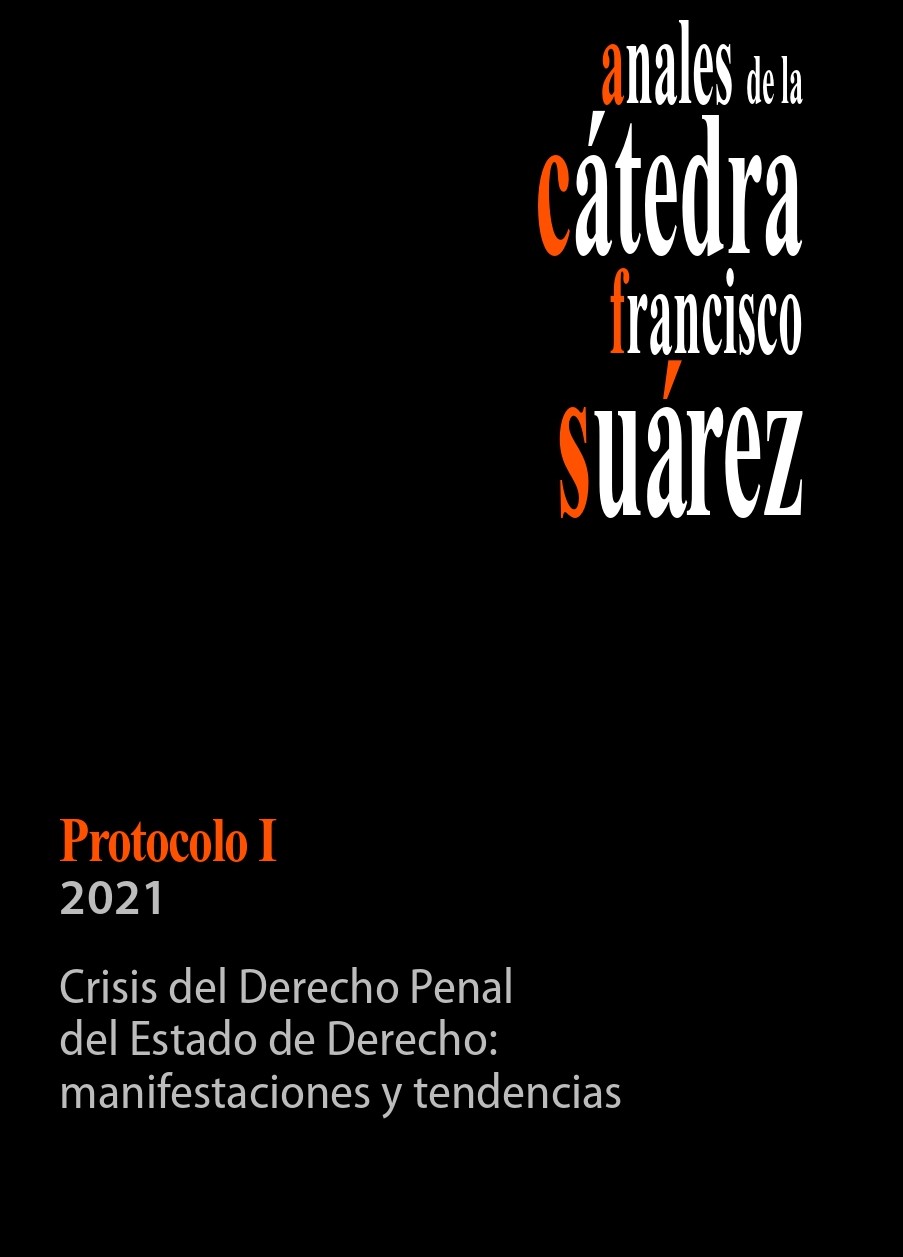Neutrality on the Internet and Criminal Compliance
DOI:
https://doi.org/10.30827/acfs.vi1.16223Keywords:
Neutrality, Internet Service Provider, Copyright, Romantic Authorship, Distinctive AuthorshipAbstract
El artículo 270.2 del Código penal español hace responsables a los prestadores de servicios intermediarios cuando existe una facilitación activa y no neutral de un comportamiento infractor en las obras protegidas por copyright. Ello se ha traducido en un mecanismo incierto que fomenta la colaboración acrítica con los titulares del copyright sin ponderar de forma adecuada la creatividad social a través del uso transformativo de la obra. Este artículo propone un análisis de la autoría como signo distintivo con la finalidad de corregir esta incertidumbre normativa mediante una interpretación restrictiva del derecho de uso exclusivo eliminando los usos derivados como fuente generadora de una obligación de actuar, y a la vez, reconociendo la necesidad de un mecanismo de contra-notificación que permita al supuesto infractor una defensa efectiva de sus intereses sin que ello implique la pérdida de la condición de actor neutral.
Downloads
References
Aide, C. (1990). More Comprehensive Soul: Romantic Conception of Authorship and the Copyright Doctrine of Moral Rights. Toronto Faculty of Law Review, 8, 185-209.
Beebe, B. (2005). The Semiotic Analysis of Trademarks. UCLA Law Review, 51, 621-704
Blevins, J. (2013). Uncertainty as Enforcement Mechanism: theNew Expansion of Secondary Copyright Liability to Internet Platforms. Cardozo L. Review, 34, 1821-1888.
Brashears-Macatee, S. (1993). Total concept and feel or dissection: Approaches to the misappropriation test of substantial similarity. Chicago-Kent Law Review 68, 913-937.
Carpou, Z. (2016). Robots, Pirates and the Rise of the Automated Takedown Regime: Using the DMCA to fight piracy and protect end-users. Colum. J.L.& Arts 39, 551- 589.
Coombe, R. (1991). Objects of Property and Subjects of Politics: Intellectual Property Law and Democratic Dialogue” Texas Law Review, 69, 1853-1880
Elkin-Koren. N. (1996). Cyberlaw and Social Change: A Democratic Approach to Copyright Law in Cyberspace. Cardozo Art. & Entertainment Law Journal, 14, 215-296.
Grinnell, C. (2009). From Consumer to Prosumer to Produser: Who Keeps Shifting my Paradigm? We do! Public Culture, 21, 577-598
Heller, M. (1998). The Tragedy of the Anti-Commons: Property in the transition from Marx to Markets. Harvard Law Review ,111, 620 -688.
Heyman, L. (2008). Everything is Transformative: Fair Use and Reader-Response. Columbia Journal of Law and the Arts 31, 445-466
Heyman, L. (2004). The Birth of the Authornym: Authorship, Pseudonymity and Trademark Law. Notre Dame Law Review, 80, 1378-1448.
Hughes, J. (1998). The Personality Interest of Artists and Inventors in Intellectual Property. Cardozo Arts and Entertainment, 16, 81-182.
Kreimer, S. (2006). Censorship by proxy: the First Amendment, Internet Intermediaries and the problem of the weakest link” University of Pennsylvania Law Review, 155, 11-101.
Ku, R. (2002). The Creative Destruction of Copyright: Napster and the New Economics of Digital Technology” University of Chicago Law Review 69, 263-324.
Landes, W & Posner, R. (1989). An Economic Analysis of Copyright. Journal Legal Studies, 18, 325- 353.
Lange, D. (1992). At Play in the Fields of the Word: Copyright and the Construction of Authorship in the Post-Literature Millenium. Law and Contemporary Problems 55, 139-151
Lemley, M. (1997). Romantic Authorship and the Rhetoric of Property. Texas Law Review, 75, 873-906
Longke, T. (2019). On an internet service provider´s content management obligation and criminal liability. Journal of Eastern-European Criminal Law, 1, 145-158.
Lunney, G, (1996). Re-examining Copyright´s Incentives-Access Paradigm. Vand. Law Review, 49, 483-656.
Pessach, G. (2003). Copyright Law as a silencing restriction on non-infringing materials: unveiling the scope of copyright´s diversity externalities. 76 Southern California Law Review 76, 1067-1104.
Rotstein, R. (1992). Beyond metaphor: copyright infringement and the fiction of the work. Chicago Kent Law Review, 68, 725-804.
Radin, M. (1982). Property and Personhood. Stanley Law Review 34, 957-1016
Rosenblatt, E. (2019) Fair Use as Resistance” UC Davis Legal Studies Research,9 377-400
Thornburg, E. (2001) Going Private: Technology, Due Process and Internet Dispute Resolution U.C. Davis L. Review ,34, 151-220.
Urban, J. & Quilter, L. (2006). Efficient Process or Chilling Effects? Takedown Notices Under Section 512 DMCA. Santa Clara Computer and High Technology Law Journal, 22, 621-693.
Wong, M. (2009) Transformative User-Generated Content in Copyright Law: infringing derivative works or fair use. Vanderbilt Journal of Entertainment and Technology Law 11, 1075
Woodmansee, M. (1984). The Genius and the Copyright: Economic and legal Conditions of the Emergence of the Author. Eighteen Century Studies, 17, 425-448.
Yen, A. (2000). Internet Service Provider Liability for Subscriber Copyright Infringement, Enterprise Liability and the First Amendment. 88 The Georgetown Law Journal, 88 1-56.
Yoo, C. (2004). Copyright and product differentiation. New York University Law Review 79, 212-281.
Downloads
Published
How to Cite
Issue
Section
License
Authors are the owners of the rights to their works. ACFS requests that publication notice on ACFS is disclosed if they appear later in another place.

















